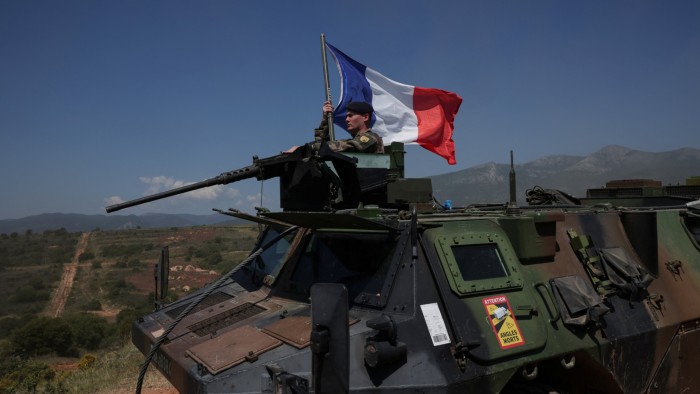Unlock the Editor’s Digest for free
Roula Khalaf, Editor of the FT, selects her favourite stories in this weekly newsletter.
The writer is an FT contributing editor and writes the Chartbook newsletter
Europe is in the midst of a huge surge of spending on defence. Over the past decade, military budgets in the EU have doubled. The justification, seemingly, is obvious. Europe’s defences are dilapidated. The threat from Russia is real.
But pause for a second to consider the facts.
The decade before Russia’s invasion was not a “lost decade” for Europe’s soldiers. According to SIPRI data, the cumulative spending of Europe’s Nato members over that period came to over $3.15tn, in 2023 dollars. Vastly greater than Russia. Today it is commonly agreed that Europe needs more deployable fighting forces. But Europe already has 1.47mn men and women in uniform — that is more active-duty troops than the US.
The scandal is not that European defence budgets have not already doubled. The scandal is that Europe spends so much and gets so little for it — no effective deterrence, few deployable troops, no stockpiles of weapons to supply to Ukraine.
Imagine if Europe in that time had spent $3.15tn on the energy transition. Four Biden-style IRA programmes back to back. But then imagine that for all that spending we received a landscape studded with a picturesque assortment of solar panels and windmills but hardly any usable clean energy and no coal phaseout. It would be a scandal. And then imagine that our first idea, when faced with a new energy crisis, was to double spending on this aimless enterprise.
If this is common sense, what is madness?
An optimist might say that things are not as bad as claimed. Europe did, in fact, get at least some (mainly British, French and Turkish) bang for its 3tn bucks. With overdue reorganisation, even Germany could be on the way to mounting a credible deterrent. Agreeing on basics like a common air defence system, or a limited selection of tanks, will make all the difference. The bar is low. All Europe needs to do is to achieve the average level of inefficiency of the US military-industrial complex to have a potent force.
On the contrary, a cynic will say that expostulating about Europe’s baroque militarism is childish. Only the very naive think that military spending is primarily about national security rather than profit. Waste is not a bug — it is a feature. How else do you explain the cost-plus-pricing system used to pay for handcrafted, €17mn howitzers? How else do you explain the fact that the vast majority of military procurement by the larger European states remains within national boundaries? No one seriously interested in getting usable weapons, in sufficient quantity and at a decent price, would proceed in this way.
Both the optimists and the cynics have a point, but neither passes for common sense right now. Common sense asks us to believe that the crisis in European defence is real and urgent. After spending more than $3tn over a decade, Europe really has been left with virtually no military capacity. To fix this situation the only option is to pour good money after bad.
But if this extra spending is not to be a recipe for headbanging despair, it must be tied to a theory of change. Clearly Europe could gain economies of scale by ordering in larger batches. But that does not require more money, simply more co-operation across borders. To justify the increase, you have to believe that new money will transform Europe’s moribund and demoralised relics of 20th-century militarism into 21st-century fighting forces. You have to believe that a quantitative surge in spending will somehow bring about a qualitative improvement.
Put in those terms, the European rearmament issue does in some ways resemble the challenge of the energy transition. The once ballyhooed Just Energy Transition Partnerships launched back in 2021 were based on the idea that an injection of extra money from Europe and the US would enable big emerging markets like South Africa and Indonesia to bring about radical transformation by buying off entrenched interest groups and clearing political roadblocks to decarbonisation.
“Quantity into quality” is a lovely idea. But those partnerships were thought ambitious at a few billion euros. Europe’s defence plans are a hundred times larger and will impose significant strain on already stretched budgets. The very least that European democracies owe their citizens is transparency about the wager they are embarking on.
This isn’t a common sense, long overdue scaling up of an otherwise healthy military machine. This is a multitrillion-euro wager that more money will somehow fix a broken system.

